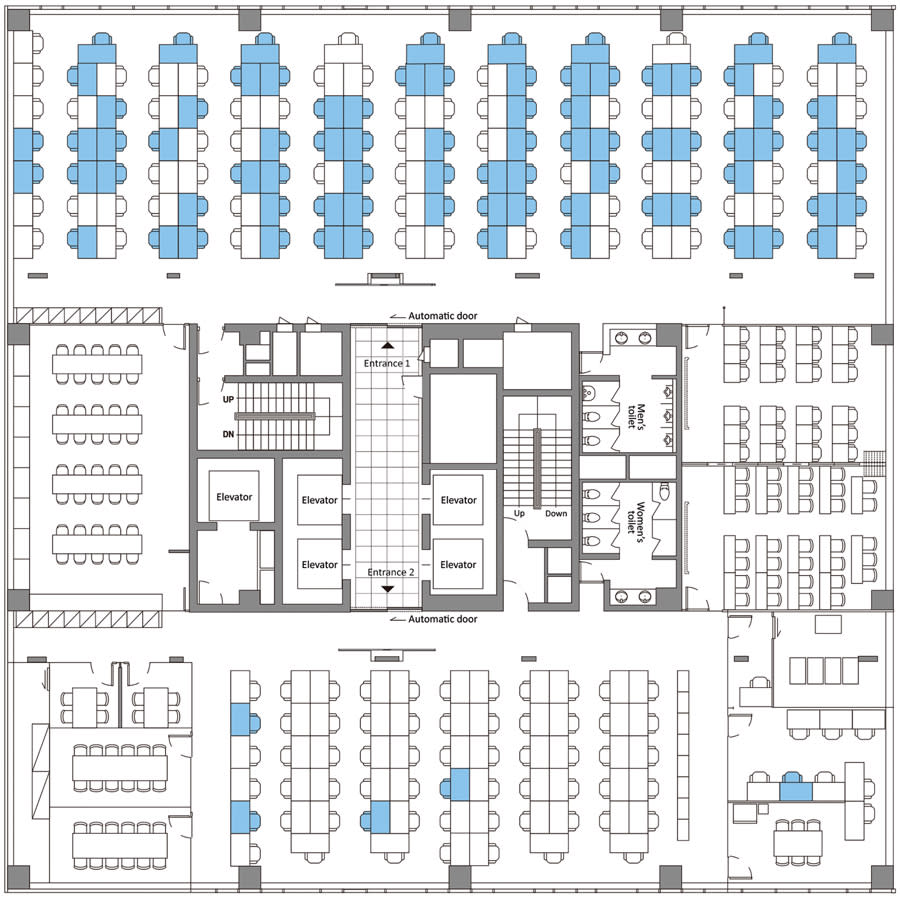'Alarming' way coronavirus spreads through offices

As Australia begins to slowly wind down restrictions, questions remain around when workers can begin to return to offices.
Also read: No desk photos: How office life will change when you return
Also read: 8 charts that show the devastating impacts of coronavirus on jobs
Also read: Coronavirus proves one in three jobs can be done from home: Here’s the problem with that
Prime Minister Scott Morrison on Friday announced Australians have “earned an early mark”, with federal and state leaders due to meet next week to decide on further easing of restrictions.
But a new study published in the Centers for Disease Control and Prevention’s Emerging Infectious Diseases journal has highlighted the danger of sending office workers back into packed buildings too early.
The study analysed a serious outbreak in South Korea in March within a mixed-use commercial and residential building.
Health authorities shut down the 19-storey building on 9 March, a day after being notified of a confirmed case in a call centre worker.
They went on to test 1143 people who worked in or had visited the building, finding 97 cases. However, all but three of those cases had worked on the 11th floor which was the call centre.
And, many of the cases on the 11th floor were even on the same side of the building.

“This outbreak shows alarmingly that COVID-19 can be exceptionally contagious in crowded office settings such as a call center,” the researchers said.
Transmission continued to 34 household members of those from the infected building.
Health authorities traced the first case back to a worker on the 10th floor, with the second case a worker on the 11th floor. However, authorities were unable to draw a link between how the first and second workers came into contact, as the 10th floor worker never went to the 11th floor.
Regardless, the 11th floor worker went on to spread the disease to another 93 colleagues proving how the disease can be “exceptionally contagious”, especially in packed and stagnant office settings.
“The magnitude of the outbreak illustrates how a high-density work environment can become a high-risk site for the spread of COVID-19 and potentially a source of further transmission,” the researchers said.
“Despite considerable interaction between workers on different floors of (the) building in the elevators and lobby, spread of COVID-19 was limited almost exclusively to the 11th floor, which indicates that the duration of interaction or contact was likely the main facilitator for further spreading of (coronavirus).”
And, the researchers continued, the outbreak highlights the “threat” posed by coronavirus in offices, and the need for “targeted preventative strategies”.
“Extensive contact tracing, testing all contacts, and early quarantine blocked further transmission and might be effective for containing rapid outbreaks in crowded work settings.”
Follow Yahoo Finance Australia on Facebook, Twitter, Instagram and LinkedIn.


 Yahoo Finance
Yahoo Finance 
